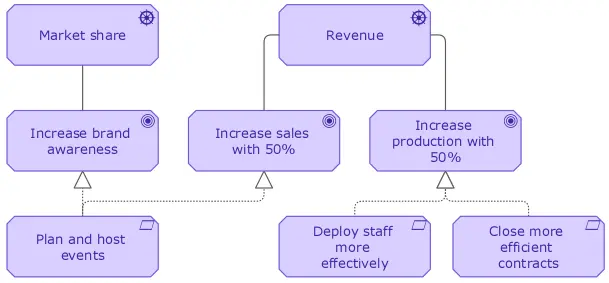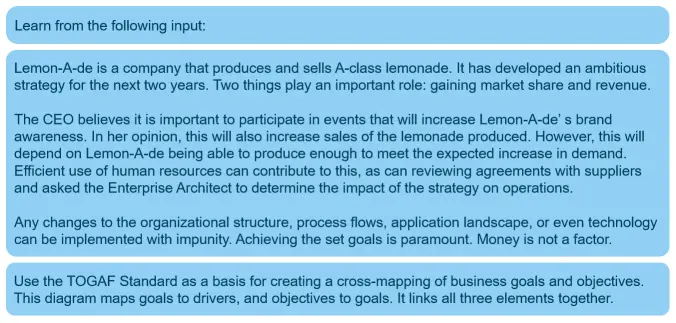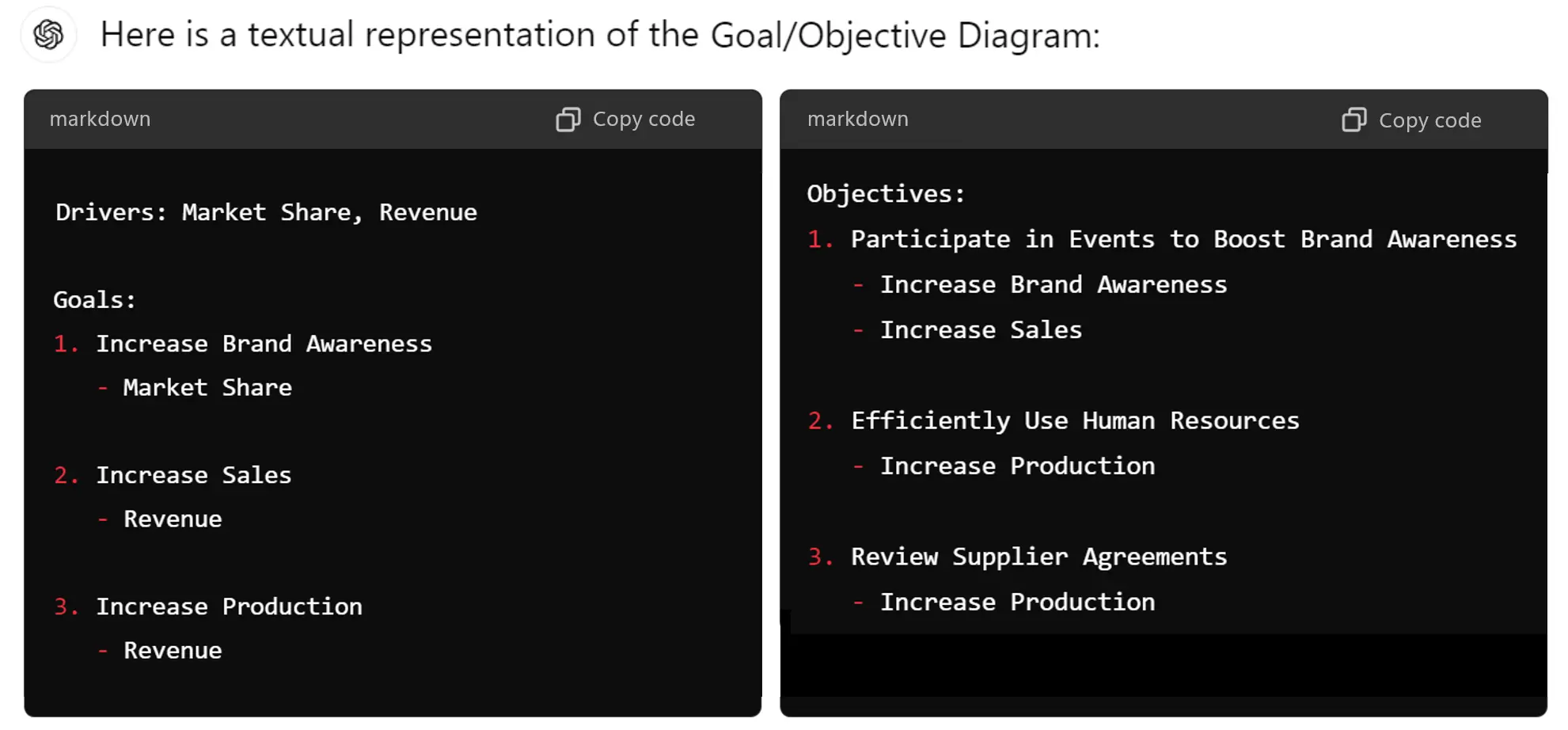Today we cannot avoid AI. We see it mushrooming everywhere. Various applications are being experimented with, and every marginal result is eagerly shared on social media. This is also true for generative AI applications in architecture. So how great would it be if we could use AI to make our lives as architects easier? We can, thanks to AI-driven architecture.
Diverse applications
There are a variety of applications where the use of generative AI can play a role. Consider, for example, the automated creation of diagrams, or the creation of functional models and various catalogs. But at least as interesting is the use of AI to interpret an organization’s strategy, using AI’s computing power and algorithms to do so.
AI can support the work an architect does by greatly reducing the time needed to interpret strategic plans. It can distill the essential elements from an organization’s strategy at the click of a button.
Doing it the old fashioned way
For my book, Getting Started with Enterprise Architecture, I created a fictional company. My plan was to have this company draw up a strategy and the associated challenges that an Enterprise Architect would have to solve, while ensuring that the strategy was ultimately implemented. Using the techniques you would have learned in the book, I wanted to visualize how architecture can help an organization realize its strategy.
So I created a fictional strategic plan for this organization and designed a visual representation of it the old-fashioned way: by hand. I needed to translate this fictional strategy into an actual architecture diagram that included drivers, goals, and objectives.

Putting it into practice
For this blog on AI-driven architecture, I used the situation I just described. I took the fictional strategy of the non-existent organization from my book. I then asked ChatGPT to create a visualization of the fictional organization’s strategic plan. Of course, I gave the AI engine some information beforehand so that it could understand its context. I simply used the text from my book.

Using the TOGAF Standard
For additional information, I started from the TOGAF Standard in terms of creating the diagram I was looking for. I wanted – as in my book – to generate a result that could be used in the form of a diagram. A Driver/Goal/Objective Diagram, that is. I told ChatGPT to use the TOGAF Standard as the source for the diagram.
The TOGAF Standard is a very complete Enterprise Architecture framework. It allows architects to customize it to maximize its use and applicability. The framework provides a wide variety of diagrams, catalogs, and matrices, including a variant of the Driver/Goal/Objective Diagram that I was looking for. The TOGAF Standard references a similar artifact, a Driver/Goal/Objective Catalog.
The purpose of the Driver/Goal/Objective catalog is to provide a cross-organizational reference of how an organization meets its drivers in practical terms through goals, objectives, and (optionally) measures.1
Given the aforementioned adaptability of the framework, the Driver/Goal/Objective Catalog artifact was well suited to serve as the basis for a Driver/Goal/Objective Diagram. Combined with the power and adaptability of the TOGAF Standard, ChatGPT easily produced an output that was immediately usable.

After ChatGPT generated the output, I used the results to create the diagram below. The AI tool’s interpretation of the input information about the fictional organization’s strategy was excellent. ChatGPT extracted exactly what I had in mind when I wrote it down in my book. With the exception of about three different phrases (the objectives were phrased differently by ChatGPT than they were in my book, but the essence remained the same), the AI tool managed to produce the same diagram as I did the old-fashioned way.

Where the AI suggested alternative wording for the objectives, I came up with different wording myself. However, the essence of the objectives is the same in both cases.
| AI-generated objectives | Old-fashioned generated objectives |
|---|---|
| Participate in Events to Boost Brand Awareness | Plan and Host Events |
| Efficiently Use Human Resources | Deploy Staff More Effectively |
| Review Supplier Agreements | Close More Efficient Contracts |
Conclusion
Although the possibilities and applicability of generative AI are vast and easy to use, in my opinion it has not yet brought about the revolution that it is being credited with in various social media. For example, one would still need to have a thorough understanding and knowledge of the methodology used to interpret the output produced by the AI. The results still need to be verified in order to use them.
So, yes, using AI to help design architecture (AI-driven architecture) is certainly plausible and definitely speeds up the process. But so far, for me, it is not the godsend that some say it is. Or at least it’s not being used in a way that unleashes its full potential.







Leave a Reply